Archiv
únor 2021
říjen 2020
září 2020
srpen 2020
leden 2020
prosinec 2019
červen 2019
prosinec 2018
září 2018
srpen 2018
květen 2018
duben 2018
březen 2018
prosinec 2017
listopad 2017
říjen 2017
září 2017
srpen 2017
červenec 2017
červen 2017
květen 2017
duben 2017
březen 2017
únor 2017
leden 2017
prosinec 2016
listopad 2016
říjen 2016
září 2016
srpen 2016
červen 2016
květen 2016
duben 2016
březen 2016
únor 2016
leden 2016
prosinec 2015
listopad 2015
říjen 2015
září 2015
srpen 2015
červenec 2015
červen 2015
květen 2015
duben 2015
březen 2015
únor 2015
leden 2015
prosinec 2014
listopad 2014
říjen 2014
září 2014
srpen 2014
červenec 2014
červen 2014
květen 2014
duben 2014
březen 2014
únor 2014
leden 2014
prosinec 2013
listopad 2013
říjen 2013
září 2013
srpen 2013
červenec 2013
červen 2013
květen 2013
duben 2013
březen 2013
únor 2013
leden 2013
prosinec 2012
listopad 2012
říjen 2012
září 2012
srpen 2012
červen 2012
květen 2012
duben 2012
březen 2012
únor 2012
leden 2012
prosinec 2011
listopad 2011
říjen 2011
září 2011
srpen 2011
červenec 2011
červen 2011
květen 2011
duben 2011
březen 2011
únor 2011
leden 2011
prosinec 2010
listopad 2010
říjen 2010
září 2010
srpen 2010
červenec 2010
červen 2010
květen 2010
duben 2010
březen 2010
únor 2010
leden 2010
prosinec 2009
listopad 2009
říjen 2009
září 2009
srpen 2009
červenec 2009
červen 2009
květen 2009
duben 2009
březen 2009
únor 2009
leden 2009
prosinec 2008
listopad 2008
říjen 2008
září 2008
srpen 2008
červenec 2008
červen 2008
květen 2008
duben 2008
březen 2008
únor 2008
leden 2008
prosinec 2007
listopad 2007
říjen 2007
září 2007
srpen 2007
červenec 2007
červen 2007
květen 2007
duben 2007
březen 2007
únor 2007
leden 2007
prosinec 2006
listopad 2006
říjen 2006
září 2006
srpen 2006
červenec 2006
červen 2006
květen 2006
duben 2006
březen 2006
únor 2006
leden 2006
prosinec 2005
listopad 2005
září 2005
červen 2005
květen 2005
duben 2005
březen 2005
únor 2005
leden 2005
prosinec 2004
listopad 2004
říjen 2004
září 2004
srpen 2004
červenec 2004
červen 2004
duben 2004
únor 2004
leden 2004
prosinec 2003
listopad 2003
říjen 2003
září 2003
srpen 2003
červenec 2003
červen 2003
květen 2003
duben 2003
březen 2003
únor 2003
leden 2003
prosinec 2002
listopad 2002
říjen 2002
září 2002
červenec 2002
červen 2002
30/4/2009
SLOVENSKÉ ŠPECIALITY
 |
| ANTON KARPITA |
Výstava študentov fotografie a nových médií , Vysoká škola výtvarných umení, Bratislava
Názov výstavy: SLOVENSKÉ ŠPECIALITY
Miesto: Galéria Opera, Divadlo Jiřiho Myrona, Ostrava, Česka republika
Vernisáž: 16. 4. 2009 o 17:00 hod.
Trvanie výstav: 17. 4. – 5. 5. 2009
Výstavu otvorí : Mgr.art. Jana Hojstričová ArtD – vedúca katedry fotografie a nových médií a
Doc. Ľubo Stacho – vedúci pedagóg ateliéru
Kontakt: 00421 905 322 718
Vystavujúci študenti:
Boris Németh, Dictionary document, 2007, 2.ročník magisterského štúdia, Ateliér fotografie a intermediálnych presahov doc. Ľuba Stacha
Martin Ilčík, Wágenplatz / Letanovce, 2007, 4.ročník bakalárskeho štúdia, Ateliér fotografie a intermediálnych presahov doc. Ľuba Stacha
Ján Viazanička, Hra, 2008, 1.ročník magisterského štúdia, Ateliér fotografie a intermediálnych presahov doc. Ľuba Stacha
Anton Karpita, Plus a mínus, 2008-09, 2.ročník bakalárskeho štúdia, Ateliér ø fotografii odb. asist. Mgr. Silvii Saparovej, ArtD
Táňa Takáčová, Podozrenie z OCD, 2008-09, 2.ročník bakalárskeho štúdia, Ateliér ø fotografii odb. asist. Mgr. Silvii Saparovej, ArtD
Andrea Juneková, IN-DIVI-DUAL-I-TY?, 2008 , 1.ročník magisterského štúdia, Ateliér ø fotografii odb. asist. Mgr. Silvii Saparovej, ArtD
Juraj Fifík, Glamoure – komponované zátišie, 2008, 4.ročník bakalárskeho štúdia Ateliér fotografie odb. asist. Filipa Vanča
Ján Kekeli, Vizuálny knock-out, 2008, 3.ročník bakalárskeho štúdia Ateliér fotografie odb. asist. Filipa Vanča
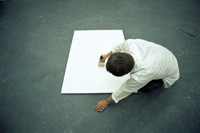 |
| Jan Kekeli vizualny knokaut |
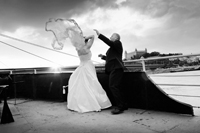 |
| BRIDE Boris Nemeth 2007 |
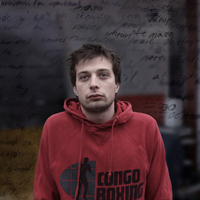 |
| Andrea Junekova individuality |
Katedra fotografie a nových médií
Výstava predstavuje súčasné práce študentov katedry fotografie v rôznych stupňoch štúdia od bakalárskeho po magisterské. Koncepcia výučby na katedre sa snaží integrovať v sebe štúdium fotografie, tak aby sa pokryla celá škála rôznorodých prístupov v tomto médiu. Katedra má v súčasnosti tri samostatné ateliéri, kde sa pedagogický proces odvíja od inklinácie vedúcich pedagógov k istým tvorivým názorom a postupom v ich vlastnej tvorbe. V ateliéri sa kladie hlavný dôraz na princíp voľnej tvorby, ktorá sa pohybuje v multimediálnom procese a svojimi výsledkami často prekračuje hranice tradičnej fotografie.
Ateliér ø fotografii odb. asist. Mgr. Silvii Saparovej, ArtD je zameraný na výskum a štúdium problematiky v oblasti súčasnej výtvarnej fotografie. Ateliér Ø fotografii definuje samotný pojem fotografie ako vizuálny záznam reality a fotografické médium ako prostriedok pre použitie fotografického obrazu vo výtvarnej tvorbe
Ateliér fotografie a intermediálnych presahov doc. Ľuba Stacha uvádza študenta do fotografického média - cez dokumentárnu fotografiu a posúva ju do iných médií. Prvá časť štúdia je vnímaná ako analytická: štúdium literatúry, návšteva výstav, rozvinutie metód výskumu témy. Druhá časť je venovaná samotnej realizácii práce. Exkurzie po Slovensku a tvorba sociálneho dokumentu sú integrálnou súčasťou štúdia.
Ateliér fotografie odb. asist. Filipa Vanča sa sústreďuje na symbiózu kvalitného technického spracovania fotografie s vybranou témou. Jednotlivé zadania gradujú s cieľom vychovávať vizuálnych tvorcov – komplexné osobnosti, ovládajúce fotografické médium, schopné ponúknuť autorské riešenia vizuálnych problémov súčasnosti v najvyššej esteticko-obsahovej kvalite.
Zlomok semestrálnych prác študentov prezentujúcich sa na tejto výstave obsahovo odrážajú pedagogické smerovanie jednotlivých ateliérov.
22/4/2009
The Edges of the Reality of Vladimír Birgus
 |
|
Vídeň, 2005
|
Leica Gallery Prague, Školská 28, Prague,, April 21 – May 17, 2009
Open daily, 11 am – 9 pm, www.lgp.cz - Old Gallery ZPAF, pl. Zamkowy 8, Warsaw, May 21 – June 7, 2009
 |
| Barcelona, 2008 |
 |
| Ostrava, 1980 |
 |
| Nice, 2008 |
It is difficult to accept the challenge of writing an article about the photographs of Vladimír Birgus, simply because they defy classification. That also leads to a frequently occurring problem with their reception. They draw our attention, yet we are often unable to say exactly why. Therein lies their tremendous power.
Birgus has been making his principal series, Something Unspeakable, without a break since 1973, annually adding new works to it. The title aptly refers to a special way of looking at the world, superbly avoiding the recording of social situations or political events or commenting on the depicted facts, which is otherwise so frequent in documentary photography today. The many reviews of Birgus’s works often employ the term ‘subjective documentary’, which suggests that we are dealing with a highly individual figure, perhaps even a lone one.
‘At first sight,’ writes Václav Podestát, ‘the photographs of Vladimír Birgus tell of miniature events occurring in the oddest places of our planet. Upon closer examination, however, they tell mainly of contemporary globalized society, of always being in a hurry, of loneliness in the crowd, contrasts between dream and reality, what is unexpressed, left to be guessed at only with difficulty. That means they tell of the inner states which we carry in our souls with various degrees of tension.’
These words underscore a certain universality of the photographs, because while sojourning in various geographic latitudes Birgus has managed to find ever-similar, strikingly banal situations of everyday life, and in this distinctive way he distances himself from the pictorial identifiably of the specific places. His works, however, always have precise titles, which describe when and where the photographs were made. The viewer thus obtains the crucial key to reading this set as a special universal picture of the spiritual state of contemporary man. His life in various corners of our world is subject to similar principles. We are incapable, however, of guessing the principles of how these photographs were made. Instead of attempting to explain them, the photographer tends to make reference to other indefinite motives. We learn that man, even in a group, remains an individual, building his own world, which, however, must co-exist with his surroundings.
Apart from real figures, shadows also frequently appear in Birgus’s photographs. Though they are cast by real figures, these shadows strangely suggest the presence of a parallel world, as was pointed out by Elżbieta Łubowicz in the introduction to the catalogue to the exhibition at, among other places, the Moscow Photo Biennale, and the Galerie Camelot, Krakow, as part of Photography Month, 2004.
The figures in the photographs are always captured in unusual situations, often highly abstract ones, as for example the photograph of the man with eyes closed sitting on a bench (Sitges, 2005), surrounded by shadows that seem to come straight out of his dreams. These two worlds overlap with each other, much as human nature tends to be ambiguous.
The restrained expression, with pure but rich shades of colour, which substantially predominate in the aesthetic of the pictures, introduces a certain order. Mainly, however, it creates a quite unreal background for the scenes that have begun to unfold – the ‘deepness’ of these shades (recalling a palette of primary colours) and their dominant presence seem to shift the photographs somewhere beyond the boundary of real vision. The long shadows in the photographs and the shades of mostly warm colours, characteristic of the late afternoon, clearly define for us the time of day when another moment of great change is approaching – the last rays of the setting sun are momentarily superseded by twilight, taking us back to the edge of the world of the imagination and dreams.
Often the figures in Birgus’s photographs have been captured at the moment of ‘watching’ or ‘observing’, and also at the moment of photographing. This double game brings us closer to the essence of the photographic medium – Birgus seeks to convey something to us not only of ourselves, our complicated natures, but also of what photography actually is, reflecting the world, not commenting on it or even creating a new reality. This question is, I believe, highly relevant in times when photography has become somewhat trite, banally simple. In the great flood of pictures photography is losing its true, elementary function, and sincerity of communication is in short supply. Birgus’s photographs, however, preserve its purest form.
Ireneusz Zjeżdżałka (1972–2008) – photographer, curator, former editor-in-chief of Kwartalnik Fotografia.
6/4/2009
Představení nových publikací
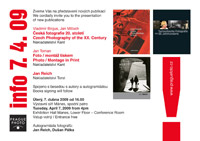 Zveme Vás na představení nových publikací.
Zveme Vás na představení nových publikací.
Vladimír Birgus, Jan Mlčoch
Česká fotografie 20. století
Spojeno s besedou s autory a autogramiádou.
Úterý, 7. dubna 2009 od 16.00 Výstavní síň Mánes, spodní patro.
Autogramiáda fotografů: Jan Reich, Dušan Pálka
6/4/2009
II. ročník veletrhu fotografie
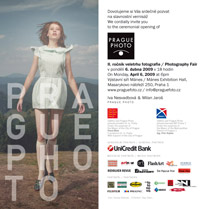 Dovolujeme si Vás srdečně pozvat na slavnostní vernisáž 2. ročník veletrhu fotografie v pondělí 6. dubna 2009.
Dovolujeme si Vás srdečně pozvat na slavnostní vernisáž 2. ročník veletrhu fotografie v pondělí 6. dubna 2009.
Vístavní síň Mánes, Masarykovo nábřeží 250, Praha 1.
www.praguefoto.cz/ info@praguefoto.cz

